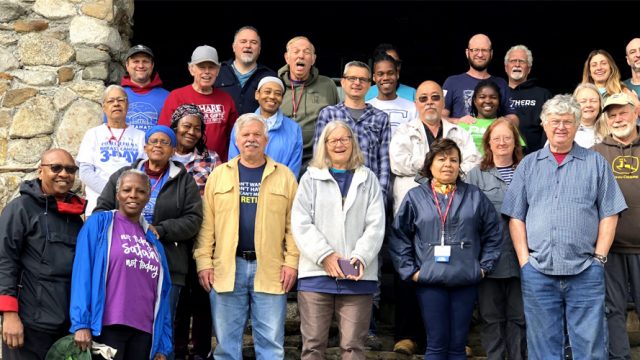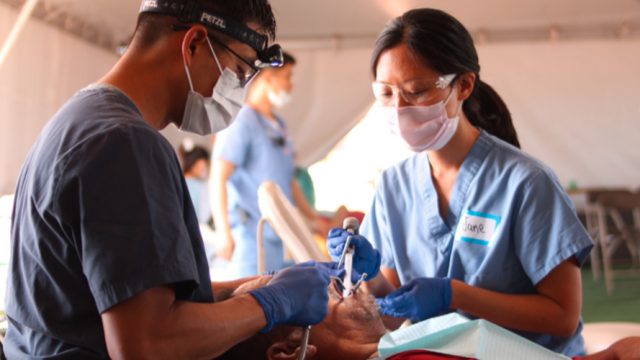The change in our worship habits have been drastic. What’s next?

Ever since the terms “COVID-19” and “coronavirus” entered our vocabulary, we’ve been treated to stories and reports of social institutions scrambling to reinvent the way they serve their communities.
Schools have turned to online teaching. Restaurants have changed from sit-down dining areas to curbside or drive-in pickup only. Churches have also had to adapt to an environment in which parishioners gather in online sanctuaries or Sabbath School classes. Once the lifeline primarily for worshippers away from home or those who are housebound, digital worship services have become the norm for many Adventists.
Now, with social distancing restrictions being lifted in states and communities, we spoke to some pastors and leaders about how they see church life in the post-pandemic future.
New Hope Seventh-day Adventist Church in Fulton, Maryland, is one of many churches throughout North America that live-streamed its worship services long before COVID-19. During the pandemic, most members worshipped from their homes as only pastors and worship leaders came to the sanctuary.
For the foreseeable future, the church still intends to meet virtually. Mike Speegle, lead pastor at New Hope, acknowledges the new reality caused by the pandemic.
“We’re adjusting to a new normal,” he says. “When we meet in person again, we’ll do it in the safest way possible for our attendees and community.”
He sees wearing masks, practicing social distancing, and rearranging seating as part of the regathering strategy.
Online streaming of church board meetings, worship services, and Sabbath School classes may have positive or negative implications, depending on how we look at them.
The convenience of having no commute, of being able to attend without dressing up, of being exposed to the best of Adventist preaching in the comfort of your living room or study—these are all things that have church staffs wondering about the future of church life. Nearly all churches report increased online participation. But what will happen after the threat of the pandemic passes and the novelty of online worship wears off? Can an online worship experience compete with one experienced in person? Or will people get used to receiving their inspiration online?
Isai Moran, pastor of worship and youth at Crosswalk in Redlands, California, agrees that worship in person will not be the same in the foreseeable future. Pre-pandemic attendance at Sabbath services averaged about 1,800. When public gatherings were restricted, people still “attended” services digitally.
“We’ve been at more than 10,000 pretty consistently,” he says.
Crosswalk’s services celebrating Christ’s resurrection attracted as many as 16,000 viewers, who saw at least some of the weekend’s services.
“We have to be intentional and thoughtful about the services we put together now,” says Moran.
Moran sees attendance at future worship services severely limited in the near future. “We’re starting to think of what it would look like to meet with 100 people to start.” And this in a facility that had three services each Sabbath, with 600 to 700 people in attendance for each service.
At Sligo Seventh-day Adventist Church in Takoma Park, Maryland, the Faith and Reason Sabbath School class used the pandemic to invite presenters from around the world to lead out in digital presentations. Thanks to contacts nurtured by class leader Charles Sandefur over many years as a church administrator, the class heard presentations by Adventist theologians, administrators, and educators from around the world.
“For 35 years our class had only ‘live’ teachers,” says Sandefur. “But we’ve now grown so comfortable with online teaching that we assume we will continue to invite guest teachers from our global church.”
Sandefur notes that class attendance has increased, not only among “locals” but among those who connect from a distance. “It reflects the thirst for quality teaching that is biblical, inquisitive, and engagingly Adventist.”
The pandemic has revealed that “the church” is not just a building, and that worship doesn’t happen only in a church sanctuary. The church, Christ’s body, is an organism that thrives in the climate of fellowship, inspiration, study, and service.
“More than anything,” says Moran, “people miss interacting with other people, to sing and worship live. People want to serve. People are eager to get back into the work of growing God’s kingdom.”
The times in which we live require a certain kind of courage that enables believers to see beyond their own fears to the needs of those with whom they share community. Speegle’s message to his congregation reflects this tension.
“We’re in these weird times,” he says. “So live courageously and live compassionately for the kingdom, no matter what happens.”








